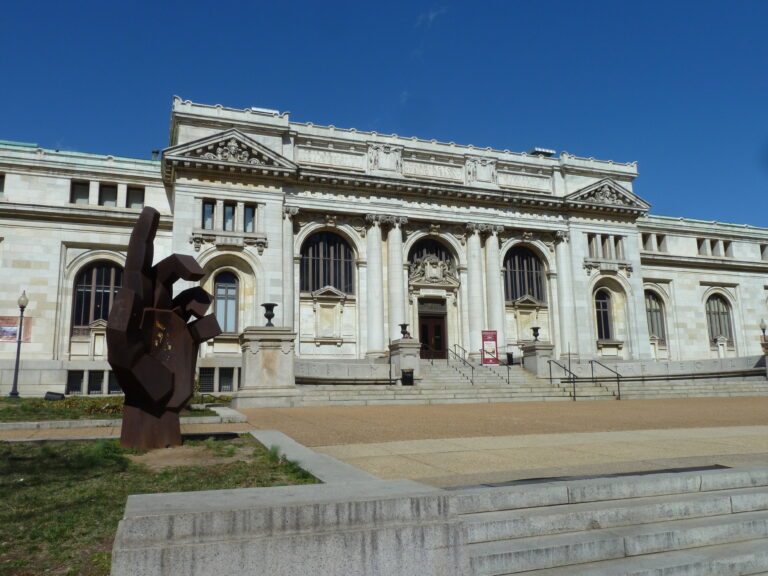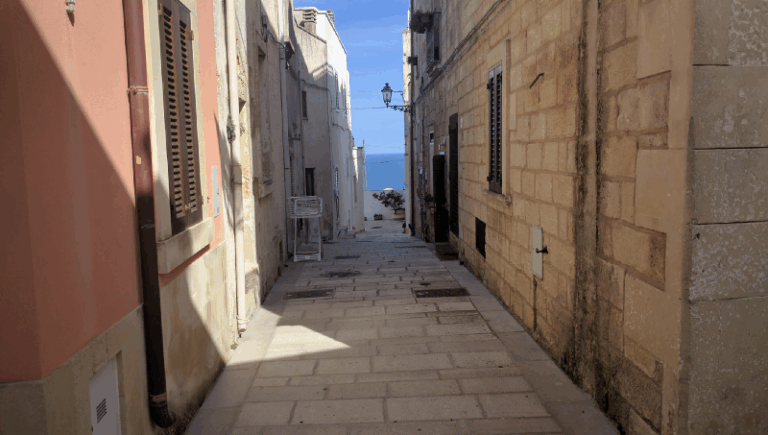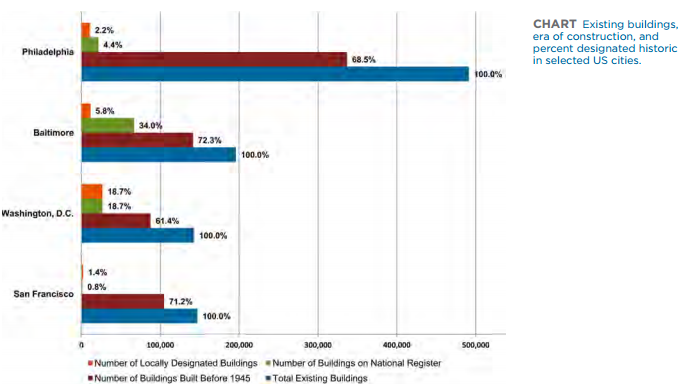Physical Address
304 North Cardinal St.
Dorchester Center, MA 02124
Physical Address
304 North Cardinal St.
Dorchester Center, MA 02124
Preservationists treat pre-1950 architecture as “historic” and irreplaceable, while often criticizing new building on a variety of aesthetic grounds. In his new book The Unfinished Metropolis, Benjamin Schneider points out that today’s historic buildings weren’t so popular when they were…
Every so often I read a ringing defense of anti-housing, anti-development politics. Someone on my new urbanist listserv recommended an article by Lynn Ellsworth, a homeowner in one of New York’s rich neighborhoods who has devoted her life to (as she…

The Carnegie Library in Washington, D.C. is now home to the world’s newest Apple Store following an expensive rehabilitation funded by the retailer. Originally built as a public library in 1903, it reopened its doors to the public on May 11, 2019 following decades of disuse, neglect, and a slew of failed attempts to repurpose the building as a museum. While some are fretting that a historic building owned by the city has been turned over to commercial use, we can rest assured that the Historical Society of Washington, D.C., the current leaseholder to the building, made the right decision. More than fifteen years ago, Niskanen Center founder Jerry Taylor and his then-colleague at the Cato Institute, Peter Van Doren, had a novel proposal to solve an intractable political dispute about the Arctic National Wildlife Refuge (ANWR), a wilderness area in northeast Alaska that is home to large populations of wildlife and vast, untapped petroleum deposits. In the early 2000s, the Bush Administration proposed opening the refuge to oil drilling in the wake of rising crude oil prices. Naturally, the usual suspects came out in favor or against the proposal. Environmentalist detractors worried that a pristine wildlife area could be ruined by any drilling and the possibility of leaky pipelines. Advocates, on the other hand, claimed only a tiny sliver of land was needed to extract billions of dollars of oil and the refuge would remain largely untouched. The benefits of oil drilling, proponents argued, would be widely shared because oil is used in so many parts of economy. Taylor and Van Doren’s proposal was simple: the federal government should give ANWR, in its entirety, to the Sierra Club or some other environmentalist group, including full rights to use or transfer the land as they see fit. While the Sierra […]

There is always the lurking suspicion that great urbanism is a museum piece, something we cannot recreate. We have to console ourselves with guarding what’s left. Even then, some feel it unfit for ‘modern life,’ that humans cannot live as their recent ancestors had. Urbanists tend to celebrate cities and spaces of great renown, which makes remaking our own little corner of the world seem futile. I spent a year living in Europe–visiting Belgium, Italy, Spain and France, among other places–and found that the best places were not the big cities, but old villages, often very wealthy in times past. And it’s easy to miss what’s special about these quiet gems: the little streets and paths within them that people call home. A newly-built mall in Leuca, Italy showcases an older design sensibility A bike tour led me to several towns in southern Italy—among them, Castro was my favorite aesthetically, with warm, immaculate streets around the center that were nonetheless devoid of many people. Castro, Italy Castro, Italy Long before going to Europe, I had seen this meme photo: Lo and behold, one such camera appeared right above where I parked my bike. But overall, Bari’s old city was my favorite, with all the life coarsing through its streets. Families would open their doors and put out folding chairs in the streets. They made the streets their living room, while literally airing their dirty laundry in the rafters between buildings. Bari, Italy A quiet street in Leuven, Belgium—perhaps my favorite of all A Flemish parking lot—the Grand Beguinage, Leuven, Belgium Reims, France In Reims, I got to tour some underground cellars that formerly stored champagne. With cool temperatures, high ceilings and lush moss lining the walls, I thought—I’d love to live here! Should people be banned from […]

Historic preservation rules are part of the regulatory framework of most major American cities. But the historic districts in which they are generally applied get little inquiry from economists, meaning little is known about their nationwide scope and economic impact. And even between municipalities they can vary, depending on the precedents set by different circuit courts. Now the Cato Institute, a libertarian Washington think tank, is filing a brief that aims to bring consistency to these laws nationwide. In a 2014 study by the National Bureau of Economic Research, a group of urban economists led by Ed Glaeser found that historic districts in New York City experienced less construction, and affected where in the city developers build. More importantly, the economists found that preservation laws were costliest in neighborhoods where redevelopment would have been most valuable. Another paper, published in 2016 by NYU, to mark the 50th anniversary of New York City’s preservation laws, explored the relationships between historic districts and the type of buildings built, the type of buildings preserved, demographics of the residents in historic districts, and more. The evidence presented in both studies suggests that historic districts do indeed alter the human geography of cities. It validates William Fischel’s observation that “historic districts thus operate as another example of the double-veto system that state land use regulations add to municipal regulation except that in this case the potential veto arrives prior to municipal review rather than afterward” (Zoning Rules!, Page 62). In Nectow v City of Cambridge, the Supreme Court held that Massachusetts violated due process by “arbitrarily and unreasonabl[y]” imposing restrictions on certain land, in a way that did nothing to protect the public (which was the original rationale for land use regulations under the earlier Supreme Court case Euclid v Ambler). That said, the rules about which historic […]
“How to Make an Attractive City”, a video by The School of Life, recently gained attention in social media. Well presented and pretty much aligned with today’s mainstream urbanism, the video earned plenty of shares and few critiques. This is probably the first critique you may read. The video is divided into six parts, each with ideas the author suggests are important to make an attractive city. I will cover each one of them separately and analyze the author’s conclusion in a final section. 1 – Not too chaotic, not too ordered The author argues that a city must establish simple rules to to give aesthetic order to a city without producing excessive uniformity. From Alain Bertaud’s and Paul Romer’s ideas, it can make sense to maintain a certain order of basic infrastructure planning in to enable more freedom to build in private lots. However, this is not the order to which the video refers, suggesting rules on the architectural form of buildings. The main premise behind this is that it “is what humans love”. But though the producers of the video certainly do love this kind of result, it is impossible to affirm that all humans love a certain type of urban aesthetics generated by an urbanist. It is even less convincing when this rule will impact density by restricting built area of a certain lot of land or even raising building costs, two probable consequences of this kind of policy: a specific kind of beauty does not come for free. Jane Jacobs, one of the most celebrated and influential urbanists of the modern era, clearly argued that “To approach a city, or even a city neighborhood, as if it were a larger architectural problem, capable of being given order by converting it into a disciplined work of art, […]
Even while the likelihood of tax reform in 2015 is questionable, historic preservationists are actively lobbying to save the historic preservation tax credit from the chopping block. Currently, developers who renovate historic buildings can receive up to a 20% tax credit, significantly reducing the cost of renovation relative to redevelopment. New York Preservation League President Jay DiLorenzo is leading the effort to increase the historic preservation tax credit to 30% rather than eliminating the break. Those in support of the tax preference argue that preservation makes neighborhoods more affordable, more walkable, and even more conducive to innovation than neighborhoods in which market incentives guide re-use versus redevelopment incentives. A recent study by the National Trust for Historic Preservation and the Preservation Green Lab supports these claims: Findings from the three study cities show that mixing buildings from different vintages—including modern buildings—supports social and cultural activity in commercial and mixed-use zones. Many of the most thriving blocks in the study cities scored high on the diversity of building-age measure. Scale also played an important role. Grid squares with smaller lots and more human-scaled buildings generally scored higher on the performance measures than squares characterized by larger lots and structures. These results support the concept of adding new infill projects of compatible size alongside older buildings. Preservationists frequently point out that Jane Jacobs favored preserving old buildings with her famous quote: Cities need old buildings so badly it is probably impossible for vigorous streets and districts to grow without them…. for really new ideas of any kind—no matter how ultimately profitable or otherwise successful some of them might prove to be—there is no leeway for such chancy trial, error and experimentation in the high-overhead economy of new construction. Old ideas can sometimes use new buildings. New ideas must use old buildings. She favored preservation for both the cheap rent that older and perhaps run down buildings could provide for new businesses and for the […]
Stephen’s post on alleged corruption at the New York City Landmarks Preservation Commission reminded me of a great scene from The Bonfire of the Vanities that I wanted to share here. Tom Wolfe describes a scenario in which a black bishop wants to sell his church’s property in order to raise money for the congregation. The fictional mayor’s assistant explains: “The bishop wants to sell St. Timothy’s to a developer, on the grounds that the membership is declining, and the church is losing a lot of money, which is true. But the community groups are putting a lot of pressure on the Landmarks Commission to landmark it so that nobody can alter the building even after they buy it.” “Is this guy honest?” asked the mayor. “Who gets the money if they sell the church?” “I never heard he wasn’t honest,” said Sheldon. “He’s a learned gentleman of the cloth. He went to Harvard. He could still be greedy, I suppose, but I have no reason to think he is.” The mayor meets with the bishop to discuss the issue of preserving the church and realizes that Bishop Thomas is an ideal connection to improve his approval with the black community. The mayor agrees to prevent the church from being landmarked and the bishop is overcome with gratitude at the benefit selling the property will provide the congregation. Then the mayor tells the bishop that he wants him to serve on a new “blue-ribbon commission against crime.” When the bishop declines because the commission would conflict with his role in the church, the mayor says not to worry about the church remaining without landmark status: “Don’t worry about that at all. As I said I didn’t do it for you and I didn’t do it for your church. I did […]
A scandal may be brewing at New York City’s Landmarks Preservation Commission. The LPC has never had a reputation for being very objective or easy to work with, but now its integrity is being called into question as preservationists are accusing both a current and former official of colluding with mega-developer Steven Roth of Vornado Realty to allow a controversial interior modification to sail through the commission unimpeded. 510 Fifth Avenue, in its heyday
Because Arlington County, VA is not home to many properties over 100 years old, planning officials have turned their historic preservation efforts to those properties they do have to preserve. The Sun Gazette reports: The first phase of the effort focused on only a very narrow slice of property types in Arlington: garden apartments, shopping centers and commercial properties more than 50 years old. Leventhal said those types of properties are most vulnerable to redevelopment. It sounds like preservation efforts in Arlington will be much less restrictive that the often discussed Landmark Designation in New York. However, the new policy will certainly increase uncertainty and cost for redeveloping protected property. And of course the question here is, are strip malls from the 1960s really worth preserving? Miles Grant at The Green Miles hits the nail on the head with this quote: But saying properties more than 50 years old are most vulnerable to redevelopment is like saying cars more than 10 years old are most vulnerable to being traded in. Sure, if classic cars were protected and not allowed to be traded in, we would see more on the road. The trade-off, though, would be that consumers would not be able to choose the cars that best meet their needs. While Smart Growth supporters and historic preservation activists share the same propensity for top-down control of development, this issue gets to the core of their inherent conflict. The preservation of car-centric development prevents higher density, walkable communities, even when this is what the market demands. While individuals may attempt to embrace both ideologies, protecting mediocre mid-century suburban architecture necessarily comes at the expense of Smart Growth principles.